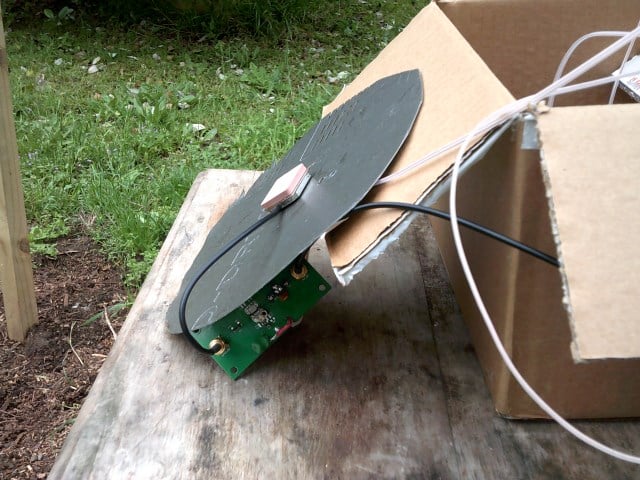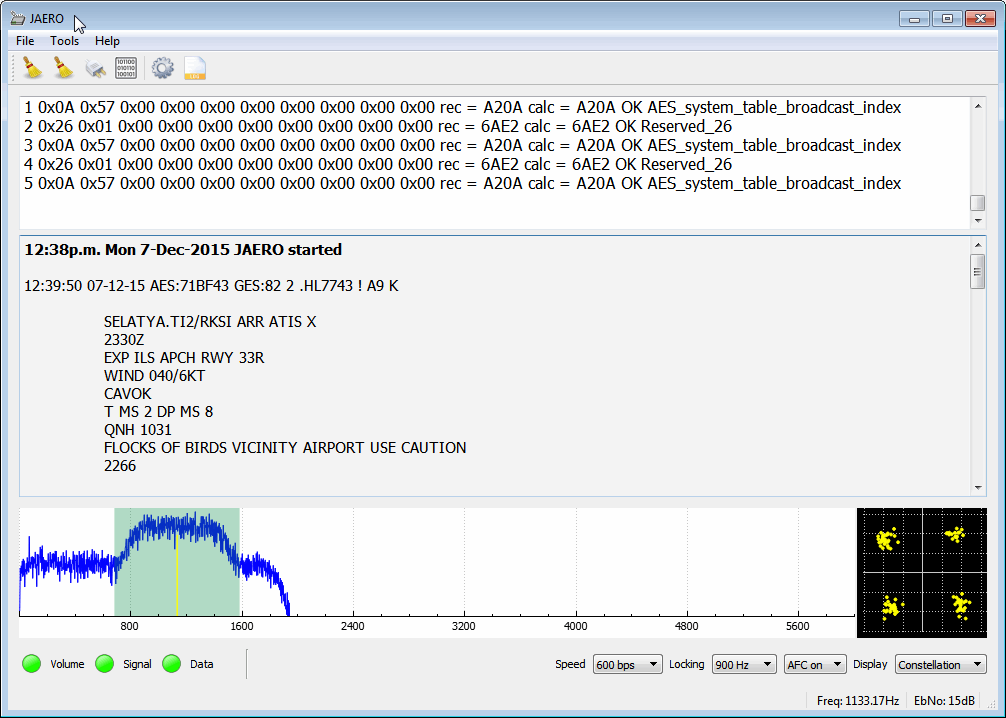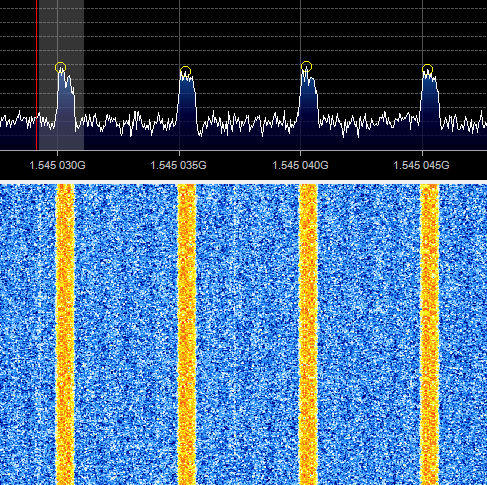JAERO: A new RTL-SDR compatible decoder for Inmarsat AERO signals
Back in August of this year we showed how it was possible to use an RTL-SDR dongle, satellite antenna, LNA and decoding software to receive and decode STD-C EGC signals from Inmarsat satellites. We also showed how it was possible to modify a low cost GPS antenna to use as a satellite antenna.
Now a radio hobbyist called Jonti has released a Windows decoder for the Inmarsat AERO set of signals. AERO is a system that provides a satellite based version of VHF ACARS (Aircraft Communications Addressing and Reporting System). ACARS is typically used by ground control and pilots to send short messages and is also sometimes used for telemetry.
Jonti writes:
JAERO is a program that demodulates and decodes Classic Aero ACARS (Aircraft Communications Addressing and Reporting System) messages sent from satellites to Aeroplanes (SatCom ACARS) commonly used when Aeroplanes are beyond VHF range. Demodulation is performed using the soundcard. Such signals are typically around 1.5Ghz and can be received with a simple low gain antenna that can be home brewed in a few hours in conjunction with a cheap RTL-SDR dongle.
In the advent of MH370, Classic Aero has become a well-known name. A quick search on the net using “Classic Aero MH370” will produce thousands of results. The Classic Aero signals sent from satellites to the Aeroplanes are what JAERO demodulates and decodes.
Unlike the usual VHF ACARS, with SatCom ACARS you can not receive signals from the Aeroplane only the people on the ground talking to the people in the Aeroplane. This means you do not get the airplanes reporting their position. Instead you tend to get weather reports, flight plans, and that sort of stuff. Just like VHF ACARS they usually use cryptic shorthand notation. For example “METAR YSSY 040400Z 08012KT 9999 FEW040 SCT048 23/09 Q1024 FM0500 05012KT CAVOK=” is the weather report for Sydney Airport in Australia in a format called METAR. It tells you the time, when the report was issued, the wind direction and speed, visibility, clouds, temperature, due point and air pressure. Then it says from 5 AM UTC the wind direction and speed and that the weather will be nice. There are sites such as Flight Utilities that can decode such information and display it in a more understandable format.
In his post Jonti also shows how he uses a modified GPS antenna to receive the AERO signals.

We gave JAERO a test and found that it decoded AERO signals easily, even with low signal strength. To use JAERO tune to an Inmarsat AERO signal in SDR# or a similar program using USB mode. JAERO will listen to the audio from the sound card or from a virtual audio pipe. We recommend setting the AFC (Automatic Frequency Control) setting on on if you find that your RTL-SDR drifts too much.
AERO signals can be found at around 1545 MHz. They only use about 800 Hz in bandwidth. See UHF satcoms page for a list of AERO frequencies.


Remember that some R820T/2 RTL-SDR dongles can have problems when receiving this high, especially when they heat up. If you find that your dongle gets deaf at these L-band frequencies try cooling the R820T/2 chip with a heatsink or fan. The Airspy or SDRplay RSP software defined radios are better choices for decoding signals this high, but the RTL-SDR will work fine if your signal strength is decent and the R820T/2 chip is kept cool.
If you are interested in VHF ACARS as well, then we have a tutorial about decoding that here.
bonjour
je n arrive pas a installer JERO sur mon ordinateur … une personne pourrai t elle n aider merci d avance..
Hi,
Does anyone know if decoding the aero signal is illegal?
It depends on what country you’re in. In the US it’s generally allowed, but it is illegal in some other countries, such as Germany.
Ok, thank you.
Hi Jonti,
Please can you let me know what settings you use for SDR# using an RTL SDR with E4000 tuner, for 600 bs, 1200 bps & 10500 bps.
E.g. Sample rate, filter etc.
Thanks
Andrew.
Holy transistors, Batman! This works amazingly good! Just holding a tiny planar log-periodic out of the attic window and the stuff comes in just fine. Awesome!
I made a crude air gap patch antenna for L Band, fired up SDR Sharp and JAERO, tuned to a signal on 1545.103MHz and waited patiently and BINGO ACARS via satellite!! I set the JAERO option to low bandwidth to reduce the processor requirements. Pretty cool for a freak like me!
Has anyone tried this using the “C” Band downlink ie , the other side of the transmission ?
Works pretty well, but it’s a processor hog.
All I did was download decoder, re-tune dongle to 1545 MHz from 1541.450 and there was AERO with all it’s magnificent acronyms! Now we need to get someone translate the data into English! I can pick up bits and pieces, but not fun.
https://youtu.be/Z1MYswSLQAE
Nice. When will the MIX4ALL be on sale?
I expect the beginning of the next year (end of Jan.) as we already start with all kind of holidays, ski, vacations… 🙂
would the entenna that came with the R820t2 from https://www.rtl-sdr.com/buy-rtl-sdr-dvb-t-dongles/ and Ultra Low Noise Amplifier 10 – 6000 MHz RF LNA *40 dB* Gain; 0.8 dB Noise Figure
work for inmrsat link below
http://www.ebay.com/itm/Ultra-Low-Noise-Amplifier-10-6000-MHz-RF-LNA-40-dB-Gain-0-8-dB-Noise-Figure-/281877669245?hash=item41a137e57d:g:-CIAAOSwKIpWDJuF
The telescopic whip won’t work for Inmarsat, you need a proper satellite antenna, or at least a modified GPS antenna. See our STD-C article that’s linked in this article for some antenna options.
That LNA will work, but it doesn’t look like it has a bias-tee power option, so you can only power it via USB or the headers.
Now this is one interesting article. Thanks for the information and thank you Jonti. Here on the East Coast the Inmarsat bird at 15.4W is reachable with a 36 inch Ku band dish and a homebrew L-band helical antenna. A little help from an in-line preamp helps to strengthen the signal. Great work and thanks again for the info on ACARS.
thanks, good job, there are a lot of signals in the aero downlink, not only acars…(e.g, voice,fax,data)
Hi,
can you tell me at what freq’s we can hear voice on inmarsat?
you no longer can